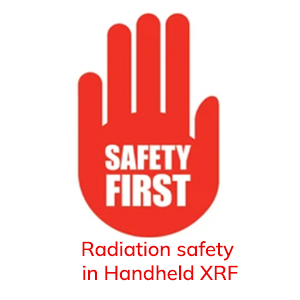X-ray fluorescence (XRF) is an invaluable analytical technique utilized in numerous industries and research fields. Particularly popular among geologists, miners, environmental scientists, and material scientists due to its rapid elemental analysis capabilities across a wide variety of samples.
In this article, we will cover the fundamentals of XRF and provide an in-depth introduction to starting off with X-ray fluorescence spectrometry (XFRS).
Understanding X-Ray Fluorescence Spectrometry (XRFS)
X-ray fluorescence spectrometry operates under the principle that when a high-energy X-ray beam is directed at a sample, its atoms emit characteristic X-rays that can then be detected and analyzed to ascertain its elemental composition.
There are two primary methods of X-ray fluorescence spectrometry, energy dispersive X-ray fluorescence (EDXRF) and wavelength dispersive X-ray fluorescence (WDXRF). Both techniques involve irradiating samples with X-rays and measuring any characteristic x-rays that emerge to identify elements present and determine concentration.
Before beginning with XRF spectrometry, there are a number of key considerations that need to be met first. These include sample preparation, instrument setup and calibration as well as data analysis. Let’s explore each step more closely here.
Sample Prep
Sample preparation is an integral component of X-ray fluorescence analysis. To ensure reliable results, samples must be prepared so as to provide representative and homogenous analyses. They should be ground down finely before being homogenized so the X-ray beam penetrates evenly throughout and fluorescence results are representative.
Apart from sample grinding, it is also essential to consider the sample matrix. Some samples require special preparation techniques like fusion or digestion in order to ensure an accurate analysis.
Once the sample is ready, it is time to set up the XRF instrument. In order to obtain accurate and reliable results from its measurements, this process involves calibrating and configuring it correctly – including setting appropriate voltage/current levels on X-ray tubes/detectors as well as detector settings/measuring times and time limits for measurements.
Instruments must also be properly aligned and optimized for the type of analysis being undertaken, including adjustments to beam path, detector configuration and other parameters to ensure maximum performance.
Calibration
Calibration is a critical element of XRF analysis. This step involves creating a correlation between the intensity of characteristic X-rays emitted from samples and their concentration of elements; typically done using certified reference materials or standard samples that have known elemental compositions.
Calibration involves using an instrument to measure the characteristic X-ray emissions from a reference material and creating a calibration curve relating X-ray intensity to elemental concentration; then this curve can be used to quantify unknown samples using their fluorescence intensity as an indicator of composition.
Once the instrument and sample have been calibrated and analyzed, the data generated must be processed and analyzed to produce meaningful information. This usually involves comparing measured X-ray fluorescence intensities to their calibration curve to establish its elemental composition and concentration levels in order to make an assessment on each sample.
Data analysis does more than quantifying the elemental composition of samples; it also includes quality control checks to assess precision and accuracy of measurements as well as potential sources of error or interference.
Applications of X-Ray Fluorescence Spectrometry (XFDS)
Fluorescence spectrometry has many applications across a variety of industries and research fields, such as:
Geology and Mining: XRF analysis is often utilized by geologists and miners for mineral exploration, mining, waste management and related applications.
Environmental science: XRF analysis can be used to analyze the elemental composition of soil, sediment and water samples for environmental monitoring and remediation purposes.
Material Science: XRF can be used to analyze the elemental composition of metals, alloys, ceramics and other materials for quality control, research, and development purposes.
Archaeology and Cultural Heritage: XRF analysis can be used to determine the elemental composition of artifacts, paintings and other cultural heritage objects to gain insight into their composition and provenance.
Fluorescence spectrometry has many applications outside these three fields as well, including forensic analysis, pharmaceuticals research, food and agriculture applications and many others.
Challenges of X-ray Fluorescence Spectrometry (XFS)
While XRF can be an extremely powerful analytical technique, it has its own set of unique challenges and limitations. Chief among them is its susceptibility to sample matrix effects such as absorption, fluorescence enhancement and interference from other elements; such effects may compromise accuracy and precision of analyses performed using this technique and must therefore be controlled during data analysis.
XRF faces one major limitation when it comes to light elements and distinguishing among similar atomic numbers, making other analytical techniques such as inductively coupled plasma mass spectrometry (ICP-MS) or atomic absorption spectroscopy (AAS) more suitable for certain elements or applications.
Conclusion
X-ray fluorescence spectrometry (XRF) is a widely utilized analytical technique used for rapid and precise elemental analysis. By understanding its principles, sample preparation, instrument setup, calibration, and data analysis one can leverage this powerful analytical technique in various fields to analyze wide variety of samples with accuracy and speed. When properly executed by carefully following protocol for sample prepration, instrument setup calibration calibration data analysis results provide valuable information regarding elemental composition of samples which contributes significantly towards research, industrial processes and environmental monitoring activities.
